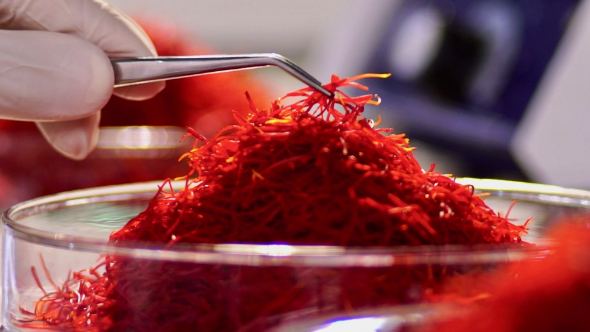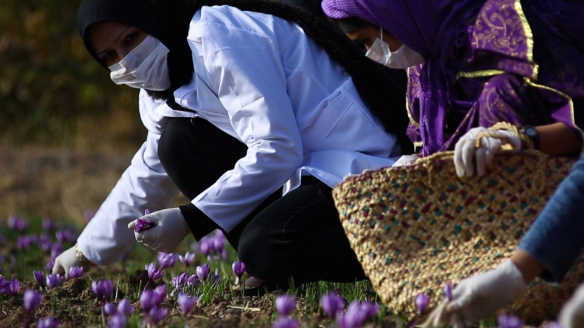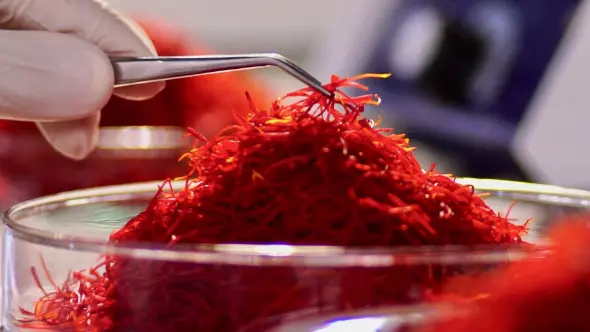
A worker in Novin Saffron International laboratory checks the quality of stigmas. Jack Barton/CGTN
Iran's economy has undoubtedly been hit hard since sanctions were re-introduced following the U.S. decision to pull out of the nuclear agreement in 2018.
Imports and exports have reportedly halved and even goods that are supposedly immune from sanctions, such as food and medicine, have been badly affected by the ban on most financial dealings with Iran.
The one product that is bucking the trend is saffron, the world's most expensive spice. It has been cultivated in and traded by Iran for about 3,000 years, and the country currently accounts for about 90 percent of global saffron output.
"We have naturally lost some markets like the American market and some advanced markets. There are hardships and definitely difficulties," acknowledged Ali Shariati Moghadam, the CEO of Novin Saffron International Group.
Exports fell in 2018 and at the start of 2019, though Moghadam says Iranian saffron firms sought out new markets leading to a rebound at the end of last year and overall export growth of about 10 percent for 2019.
A bartering system also played a role in getting around the sanctions on financial dealings with Iran.

Harvest at Novin Saffron International farm. Jack Barton/CGTN
"As an example, the saffron that has been exported to Spain, the money is changed to olive oil and it's possible the money can change to another agricultural product and return to this country," says Moghadam.
Saffron is made from the crimson stigmas of the saffron crocus flower harvested in autumn.
Each flower produces about three stigmas and it takes up to 16,000 flowers to make a kilo of saffron, which can sell for thousands of dollars depending on the quality.
In Tehran's central market, saffron retailers say smuggling is also booming as an inevitable consequence of the sanctions coupled with high global demand for a spice that saw a price rise in 2019. The sanctions and weather conditions led to a high-quality harvest.
Local sales have also reportedly remained high.
"The saffron market is good enough. Iranian people generally consume lots of saffron," says Payam, a spice seller in Tehran's largest market, adding "additionally we have lots of customers from all over the world including China and Spain, and sanctions and rising prices have not affected our sales."
Last year, Iran's commodities exchange added saffron to its derivatives market, signaling confidence in future contracts whatever the fluctuations of diplomatic exchanges may bring.
 简体中文
简体中文





